English Heritage sites near Blisland Parish
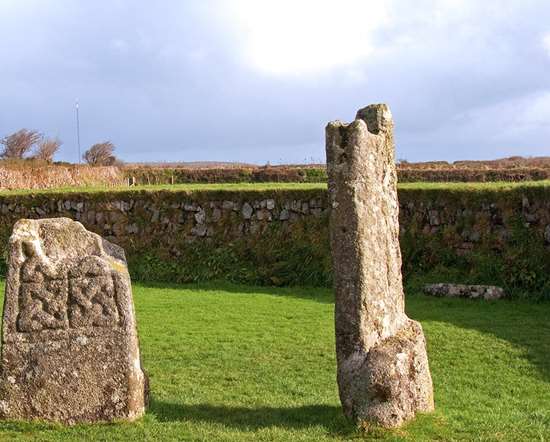
KING DONIERT'S STONE
8 miles from Blisland Parish
Two richly carved pieces of a 9th century 'Celtic' cross, with an inscription commemorating Dumgarth, British King of Dumnonia, who drowned in c. AD 875.
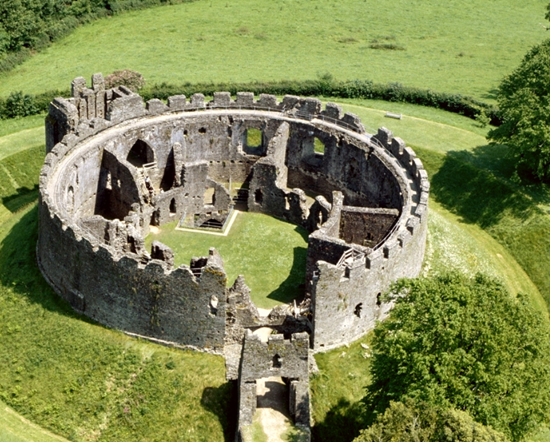
RESTORMEL CASTLE
8 miles from Blisland Parish
Great 13th-century circular shell-keep of Restormel still encloses the principal rooms of the castle in remarkably good condition, standing on an earlier Norman mound surrounded by a deep dry ditch.
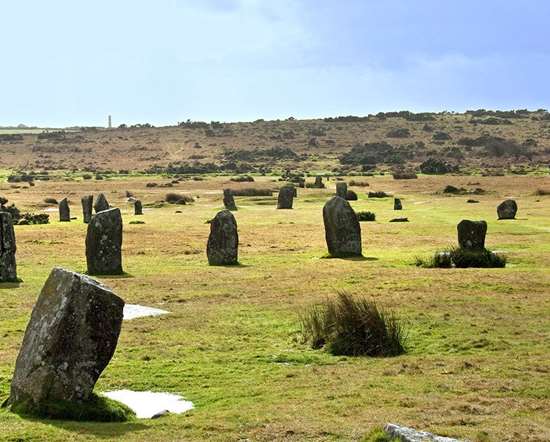
HURLERS STONE CIRCLES
8 miles from Blisland Parish
Three fine late Neolithic or early Bronze Age stone circles arranged in a line, a grouping unique in England.
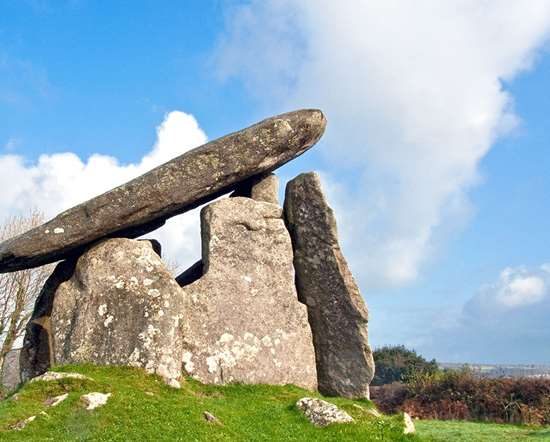
TRETHEVY QUOIT
9 miles from Blisland Parish
This well-preserved and impressive Neolithic 'dolmen' burial chamber stands 2.7 metres (8.9 ft) high. There are five standing stones, surmounted by a huge capstone.
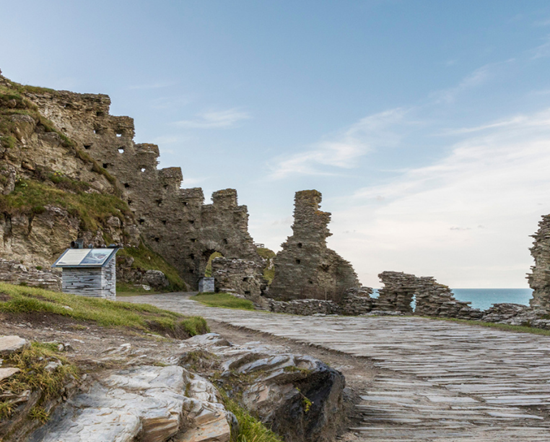
TINTAGEL CASTLE
10 miles from Blisland Parish
Tintagel Castle is a magical day with its wonderful location, set high on the rugged North Cornwall coast. It offers dramatic views, fascinating ruins and a stunning beach café.

ST BREOCK DOWNS MONOLITH
11 miles from Blisland Parish
Originally 5 metres (16 feet) high and weighing some 16.75 tonnes, this is Cornwall's largest and heaviest prehistoric monolith. It stands on the summit of St Breock Downs, offering wonderful views.
Churches in Blisland Parish
Blisland: St Protus & St Hyacinth

Blisland
+44 (0)1208 8500
http://www.blisland.info/cgi-bin/index.pl
Welcome to the parish church of Blisland: St Protus & St Hyacinth in the Anglican Diocese of Truro and county of Cornwall England.
History of the church
Blisland Church dates from Norman times the evidence for which can be seen in the West and North walls of the Nave. There may well have been a Saxon Church or even a Celtic place of worship but no archaeological evidence for this has yet been found.
The Norman building was extensively enlarged in the 15th century by the addition of the tower, the porch, the South aisle, the North transept with the Lady Chapel and the South transept. The South transept was rebuilt in the 18th century to form a private chapel which is now the Vestry. The impressive barrel vault ceilings with their carved angels and bosses also form part of the 15th century transformation. The tower contains six bells re-cast in 1790 (replacing four older ones 1420 - 1789) and restored in 1908.
Over the succeeding centuries there was a considerable amount of neglect and decay but in the 19th century a major restoration was undertaken to restore such medieval work as had survived and to provide a new medieval style Rood Screen, a renaissance style High Altar, an elaborate plaster ceiling in the Chancel and a carved beam in the South Aisle to support the subsided leaning column. This was master-minded by Rector Vernon Edward-Collins , designed by F.C.Eden and paid for by the villagers and the Edward-Collins family.
The Betjeman conncetion
This Church was a favourite of Sir John Betjeman CBE, Poet Laureate, and it featured in one of his radio broadcasts in 1948. He described it as "Of all the country churches of the West that I have seen, I think that Blisland is the most beautiful". He also said " That great church architect Sir Ninian Comper, said a church should bring you to your knees when you first enter it. Such a building is Blisland." Many visitors come to the church enthused by Sir John's love for this gem of a church.
The Patron Saints
Blisland is the only church in England to be dedicated to St Protus and St Hyacinth. They were brothers who were martyred in the late 3rd century in Rome. How they came to be honoured at Blisland is open to conjecture but the first record of such occurs for the first time in the Patent Rolls (1436) of Henry VI, King of England and founder of Eton College and King's College, Cambridge.
Our Patrons
Ours Patrons are The Society for the Maintenance of Faith whose web site can be found at http://www.smftrust.org.uk/
We are able to offer talks on the history of the church and a tour of important features for groups that wish to visit us. Please contact the PCC secretary on 07785 550032
St Catherine's church, Temple

Welcome to the parish church of Temple: St Catherine in the Anglican Diocese of Truro and county of Cornwall England.
History of the Church
St. Catherine's Church is located in the tiny hamlet of Temple, on Bodmin Moor, and stands on the site of what was the earlier Templar chapel. It formed part of the medieval Preceptory of Trebeigh
Local tradition has it that pilgrims travelling from Ireland were in the habit of avoiding the hazards of sailing round Lands End, by going up the Padstow estuary, probably as far as Wadebridge, and then overland to the Fowey river. Padstow was an important port and Fowey probably the busiest harbour on the South coast, from which many travellers from the West Country would have embarked for Europe. So, perhaps it was natural for the Templars to build their church and refuge on the moor to accommodate travellers who passed over this wild stretch of country on their way to the Holy Land.
It is not known exactly in what year the 12th c. church, dedicated to St. Catherine of Alexandria, was built. It stands today on the site of the earlier Templar chapel and after 1312, the Templars were no longer at the property and it was turned over to the Hospitallers.
Later, particularly in the 16th c., this church became famous as a place where marriages could be performed without banns or license, e.g., similar to Gretna Green up until recently. In 1753 such marriages became illegal and after this point, the Temple church lost its congregation and fell into serious disrepair; no services were held for nearly a century.
In 1850 a fund was started for its restoration. The new plans followed as closely as possible those of the original Templar church. The ancient tower arch was kept and wherever possible, relics and other stones were used. The base of the old Norman font is preserved in the inner doorway, and various stones bearing the engraved crosses of the Templars and the Hospitallers can be discovered in the fabric of the building. The church contains several references to its links with the Knights Templar, including a cross pattée in the east window and a depiction of a mounted knight in the north window of the church tower. The new church was opened and consecrated on 30th May 1883 by the Bishop of Truro.
In 1934, the parish of Temple was incorporated into the parish of Blisland.
Pubs in Blisland Parish
Blisland Inn
 A friendly rural community pub and real ale promoter on the only village green in Cornwall. Voted three times Cornwall CAMRA Pub of the Year and in 2001 becoming the campaign's national Pub of the Year, it has clocked up well over 3000 diff...
A friendly rural community pub and real ale promoter on the only village green in Cornwall. Voted three times Cornwall CAMRA Pub of the Year and in 2001 becoming the campaign's national Pub of the Year, it has clocked up well over 3000 diff...
